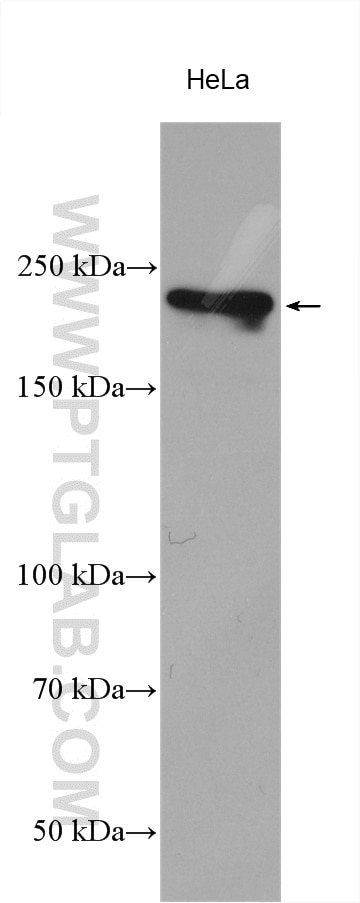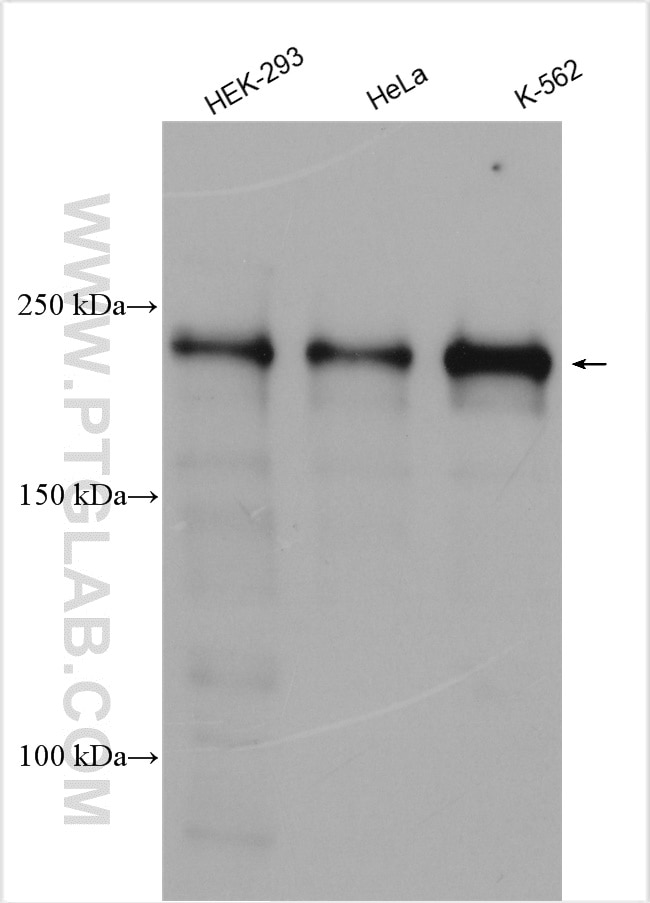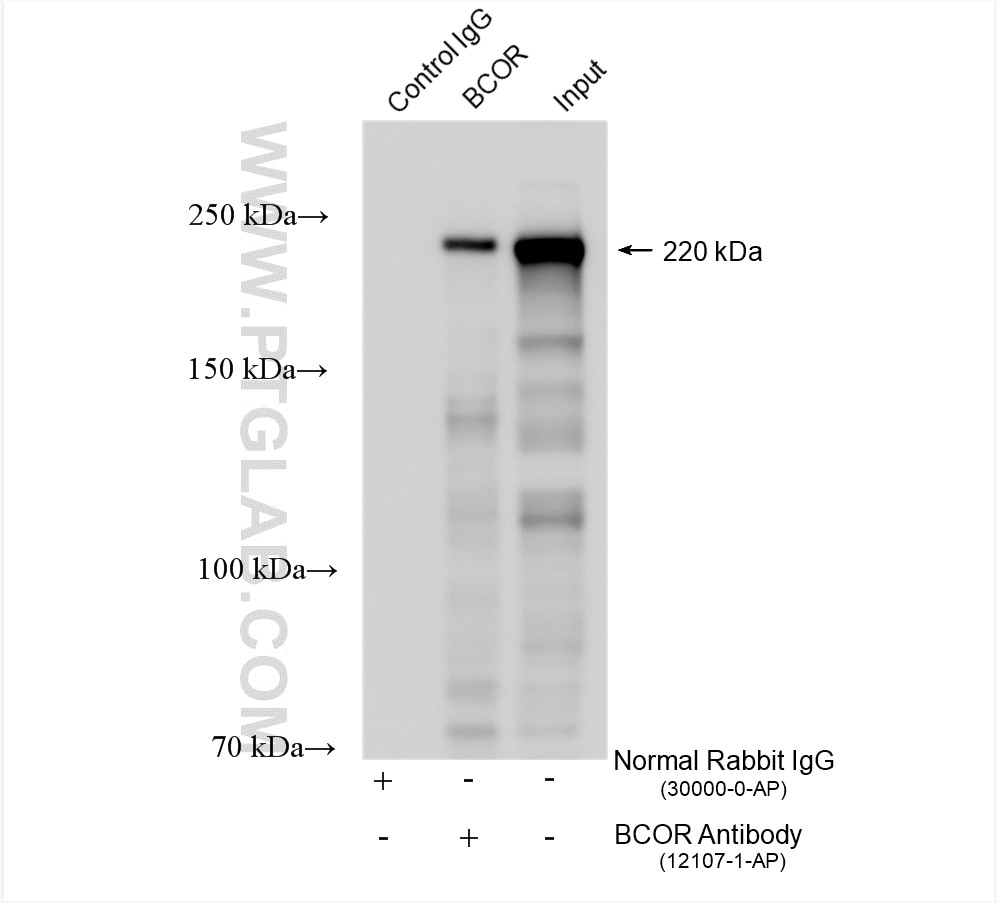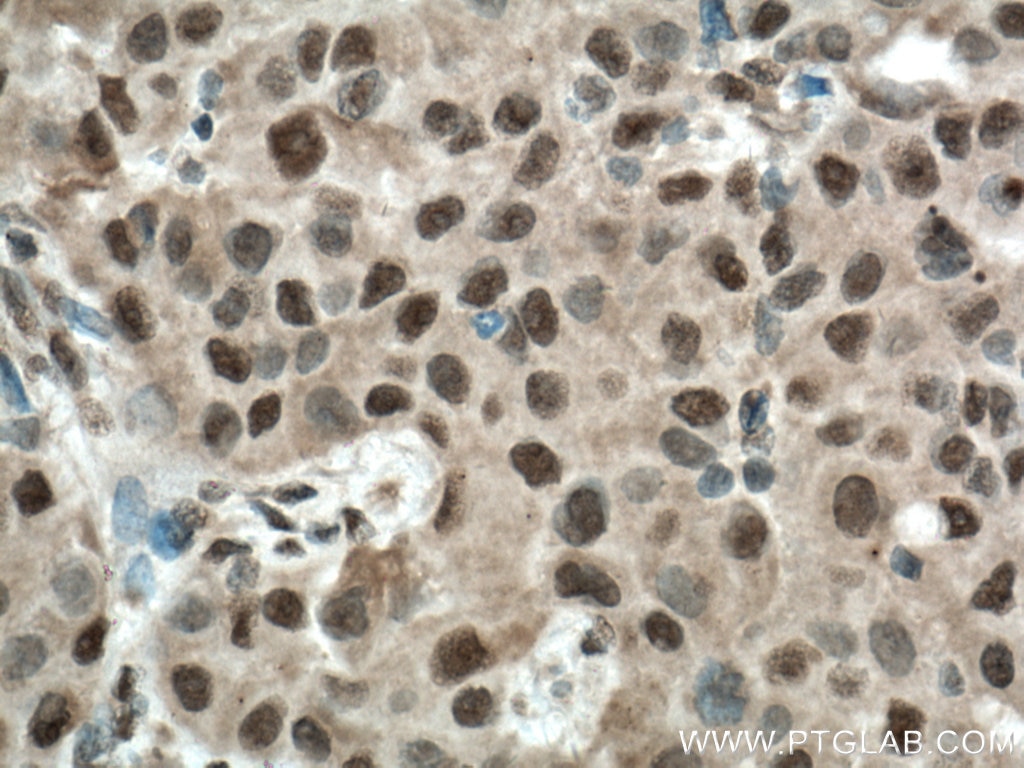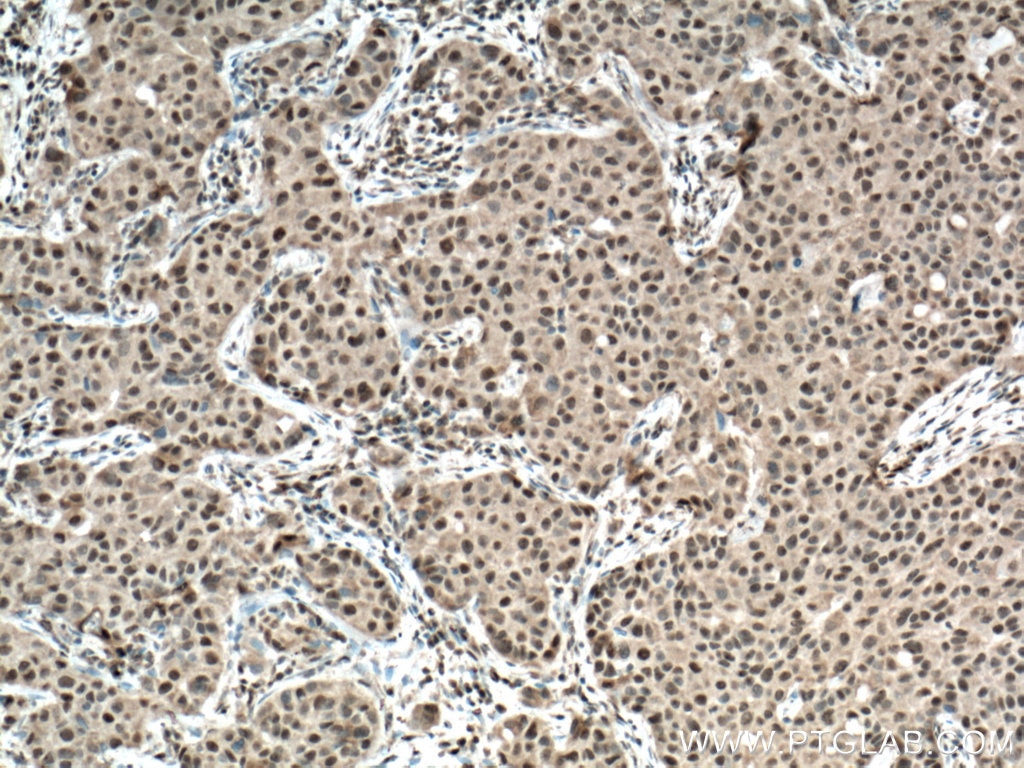Anticorps Polyclonal de lapin anti-BCOR
BCOR Polyclonal Antibody for WB, IP, IHC, ELISA
Hôte / Isotype
Lapin / IgG
Réactivité testée
Humain, rat, souris
Applications
WB, IHC, IP, CoIP, ChIP, ELISA
Conjugaison
Non conjugué
N° de cat : 12107-1-AP
Synonymes
Galerie de données de validation
Applications testées
| Résultats positifs en WB | cellules HEK-293, cellules HeLa, cellules K-562 |
| Résultats positifs en IP | cellules HEK-293, |
| Résultats positifs en IHC | tissu de cancer du sein humain, il est suggéré de démasquer l'antigène avec un tampon de TE buffer pH 9.0; (*) À défaut, 'le démasquage de l'antigène peut être 'effectué avec un tampon citrate pH 6,0. |
Dilution recommandée
| Application | Dilution |
|---|---|
| Western Blot (WB) | WB : 1:2000-1:10000 |
| Immunoprécipitation (IP) | IP : 0.5-4.0 ug for 1.0-3.0 mg of total protein lysate |
| Immunohistochimie (IHC) | IHC : 1:50-1:500 |
| It is recommended that this reagent should be titrated in each testing system to obtain optimal results. | |
| Sample-dependent, check data in validation data gallery | |
Applications publiées
| WB | See 7 publications below |
| IHC | See 3 publications below |
| IP | See 1 publications below |
| CoIP | See 1 publications below |
| ChIP | See 2 publications below |
Informations sur le produit
12107-1-AP cible BCOR dans les applications de WB, IHC, IP, CoIP, ChIP, ELISA et montre une réactivité avec des échantillons Humain, rat, souris
| Réactivité | Humain, rat, souris |
| Réactivité citée | Humain, souris |
| Hôte / Isotype | Lapin / IgG |
| Clonalité | Polyclonal |
| Type | Anticorps |
| Immunogène | BCOR Protéine recombinante Ag2752 |
| Nom complet | BCL6 co-repressor |
| Masse moléculaire calculée | 1703 aa, 186 kDa |
| Poids moléculaire observé | 186 kDa |
| Numéro d’acquisition GenBank | BC009675 |
| Symbole du gène | BCOR |
| Identification du gène (NCBI) | 54880 |
| Conjugaison | Non conjugué |
| Forme | Liquide |
| Méthode de purification | Purification par affinité contre l'antigène |
| Tampon de stockage | PBS with 0.02% sodium azide and 50% glycerol |
| Conditions de stockage | Stocker à -20°C. Stable pendant un an après l'expédition. L'aliquotage n'est pas nécessaire pour le stockage à -20oC Les 20ul contiennent 0,1% de BSA. |
Informations générales
BCOR, a corepressor of BCL6, binds to transcriptional factors and specifically inhibits gene expression. BCOR plays a key role in the early embryonic development, mesenchymal stem cell function and hematopiesis. BCOR can associate with HDACs, the polycomb group protein, polycomb group Ring finger protein1/nervous system polycomb1 (PCGF1/NSPC1), histone demethylase, F-box- and leucine-rich repeat protein10(FBXL10). Via repression of TFAP2A acts as a negative regulator of osteo-dentiogenic capacity in adult stem
Protocole
| Product Specific Protocols | |
|---|---|
| WB protocol for BCOR antibody 12107-1-AP | Download protocol |
| IHC protocol for BCOR antibody 12107-1-AP | Download protocol |
| IP protocol for BCOR antibody 12107-1-AP | Download protocol |
| Standard Protocols | |
|---|---|
| Click here to view our Standard Protocols |
Publications
| Species | Application | Title |
|---|---|---|
Nat Genet Consistent in-frame internal tandem duplications of BCOR characterize clear cell sarcoma of the kidney. | ||
Blood Epigenetic Regulation of Non-canonical Menin Targets Modulates Menin Inhibitor Response in Acute Myeloid Leukemia | ||
Mol Cell Non-canonical PRC1.1 licenses transcriptional response to enable Treg plasticity in immune adaptation | ||
Nucleic Acids Res Bimodal regulation of the PRC2 complex by USP7 underlies tumorigenesis. | ||
Int J Mol Sci BCOR Internal Tandem Duplication Expression in Neural Stem Cells Promotes Growth, Invasion, and Expression of PRC2 Targets. | ||
Sci Rep Loss of Polycomb Group Protein Pcgf1 Severely Compromises Proper Differentiation of Embryonic Stem Cells. |
Avis
The reviews below have been submitted by verified Proteintech customers who received an incentive for providing their feedback.
FH Sid (Verified Customer) (05-13-2019) | Works well for mouse hematopoetic cells, some strong non specific bands ~ 150 kD and ~100 kD, however can be reasonably resolved on 4-15% gel.
|
